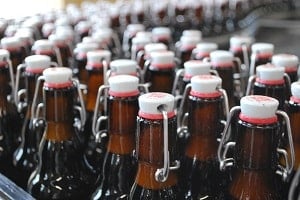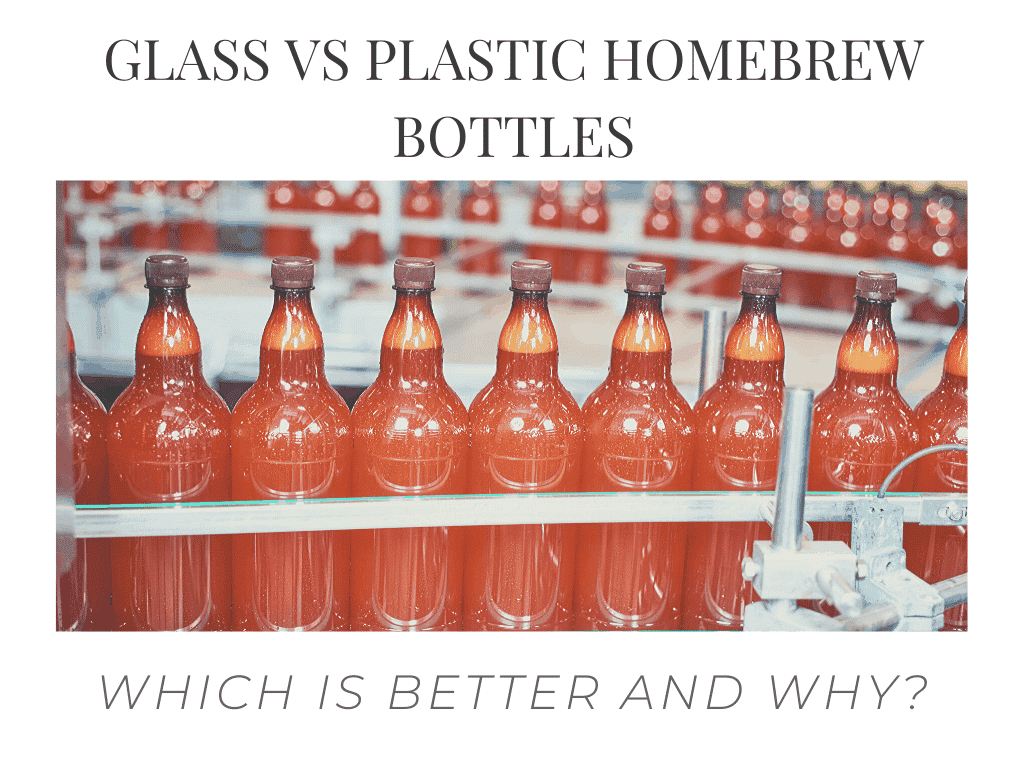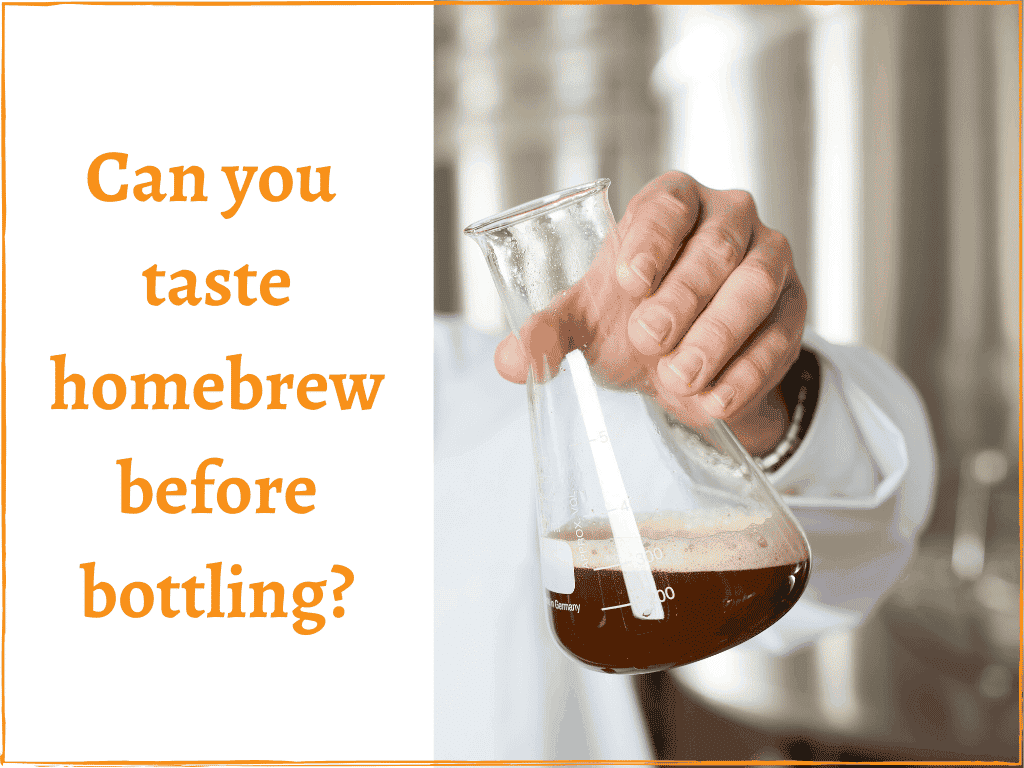Soda, champagne, and beer all have one thing in common: foam. Yet beer is the only one where the foam sticks around. Should you keep the head of foam that forms after pouring a beer?
A good beer pour should include one-half to an inch of foam. This not only looks great but can add a subtle creaminess to the beer. Even if it dissipates quickly, the foam can also help release subtle aromas, improving the beer’s complexity and taste. Releasing some of the carbonation also lessens the amount of gas that ends up in your stomach.
Keep reading to learn everything you need to know about the head and why you should enjoy it!
Topics We Cover
Should beer be poured with a head?
The sight of a full head of beer can either be beautiful to see or seem to be a waste of glass space. While it is a shame that beer drinkers often scoff at the foam, it is understandable, especially if they haven’t enjoyed a pour with just the right amount of head.
Beer should have a head of foam even if it does not last long. The perfect pour will yield one-half to an inch of thick, creamy foam. This head captures the released carbonation and helps create a smooth and creamy sensation when drinking – while also keeping that extra gas out of your stomach! As the foam develops, you will also be treated to an enhanced aroma which may actually lead to a more complex taste.
Unless there is something off with the beer, glass, or your pouring technique, most common beer styles will naturally create a foamy head.
We’ve all used or seen someone use the nose oil trick to make beer foam dissipate. Not only is that a waste of a perfectly good head, but you also run the risk of contaminating your beer with any bacteria wiped off your nose!
4 Ways a head of foam improves beer
Now that you know more about the basics of foam you may be wondering what it does for your beer. There are several reasons that you want a good head on your beer. Beer is good without a head of foam. With one, however, it is great.
A head of foam improves beer by:
- Releasing aroma
- Preventing bloating
- Adding texture
- Looking great
Let’s take a deeper look at each of these.
Releasing aroma
Although there is some debate on exactly how much of what we consider flavor can be attributed to smell rather than taste, there’s no doubt that it is a vital factor in how we enjoy our food and, in this case, drinks.
The aroma of the foam may help improve the complexity and flavor of the beer itself. As the carbonation is released from the liquid, it carries with it aromatic compounds. These compounds basically give you hints as to what you can look forward to in the beer itself and may actually allow you to taste them better.
Have you tried drinking a tall one when you’ve got a cold? If it didn’t taste as you expected, it’s probably because your nose was stopped up and you couldn’t fully experience your beer. Drinking a beer without its foam is sort of like that, without the sneezing fit.
Preventing bloating
When you pour a beer properly, some of the extra pressurized carbonation moves from the beer to the foam.
Failing to depressurize the beer means all that carbonation has to go somewhere. In this case, that somewhere is your stomach, which will leave you feeling bloated with all the extra gas.
Even if you don’t drink to excess, drinking your beer without a good head can leave you feeling rough the next day.
Adding texture
It may surprise you to know that a good head can also improve the mouthfeel of your beer.
The head of foam will add a light creaminess to your beer. This can make the beer feel smoother as you drink it.
The contrast can provide an interesting counterpoint to the beer itself.
Looking great
Lastly, it’s hard to deny that a beer with a thick head on top just looks great. That’s why all the ads show it!
A pint of beer without a head looks fine, but it seems to be missing something.
Where does the foam on beer come from?
Foam in drinks is not unique to beer, of course. Sodas will foam up the same as beer. What these two have in common is part of where beer foam comes from.
Beer has more carbonation dissolved in it than it can normally hold. When you open a beer you relieve the pressure that kept the carbonation dissolved. This release of pressure will help some carbonation escape. Pouring will then encourage more carbonation to release.
This process is called nucleation; however, it is only half of it. These bubbles would quickly burst on the surface just like soda if it weren’t for Lipid Transfer Protein 1 (LTP1) and other compounds found in beer. The CO2 or N2 escapes the beer in the form of bubbles that are then retained on the surface of the beer by LTP1.
LTP1 is a hydrophobic protein, meaning it will get as far away from water as it can. It binds itself to the rising bubbles and acts as a stabilizing shell. LTP1 comes from malted barley and other grains. This means that the ingredients of a beer affect the head.
Hops also play a part in the creation of a beer’s head. The iso-alpha acids will combine with LTP1 and further stabilize the bubbles.
What if a beer pours with no head?
If you pour a beer and it foams but doesn’t retain a head, don’t worry. While this can be a sign that something is off, sometimes beer simply doesn’t have good head retention.
If a beer pours without a head, it can be because the glass is dirty or because there is cleaning detergent interfering with foam retention. Your pouring technique and the composition of the beer itself will also contribute to whether or not your beer has an impressive head.
There are times when a lack of beer head is completely normal. When you pour a beer slowly with the glass tilted almost horizontally your beer likely won’t foam at all. Without foam, there can be no head.
Additionally, some styles of beer aren’t very carbonated by their nature. These beers may not have enough carbonation to form a head. This can also occur with old bottles of beer that have lost a majority of their carbonation.
In fact, it is normal for high ABV beers to have little to no head. High levels of alcohol will prevent foam from retaining a head.
That said, there are times when this is an issue. As mentioned above it can be a sign that your glass is dirty. Always rinse out glasses before pouring beer. Sometimes the issue is with the beer itself.
A lack of grains like barley and wheat as well as an abundance of some adjuncts like corn and sugar can reduce head retention. Too few of the first or too much of the second will reduce the levels of the crucial hydrophobic compounds.
How much head should you have on a beer?
Once you acknowledge that your beer should have a head of foam the question is how much. Fortunately, there isn’t really a wrong answer.
A decent foam head will be half an inch to an inch thick. More than this will take up too much of a standard pint glass. Less than a half-inch can dissipate too quickly.
Having much more than an inch of head may be impractical in most situations, but this is mostly up to personal preference.
How long should a head last on a beer?
Just like head creation, how long the head lasts depends on several factors.
The head of a beer should last at least a couple of minutes. Some beer styles will have better head retention and will therefore have a head that lasts longer. For example, you should not expect the head on a lager to last longer than the head on a stout.
Ingredients have an impact on head retention. Hops and certain grains make the biggest contribution to head retention. This means that IPAs and Hefeweizens tend to have a longer-lasting head.
The style of carbonation also has an impact. Carbon dioxide will result in bubbles larger than nitrogen carbonated beers. Smaller bubbles are much more stable than larger ones. This means that beers that have been nitrogenated (rather than carbonated) will have longer-lasting heads.
Do you lose beer when it foams?
Part of the reason folks try to avoid foam is in an attempt to avoid wasting beer. While avoiding alcohol abuse is admirable, you don’t have to worry too much about foaming beer. Of course, too much foam can be a problem.
With a proper pour or a properly set up keg, you will be able to get a decent head. However, if the beer foams more than it should, you can lose some beer to overflowing glasses. Since foam is roughly 20-25% beer, any foam lost to the floor is also lost beer.
As long as the bottle or can hasn’t been shaken, you should be able to pour without too much foam. If it has there is little you can do.
When it comes to over-foaming beer from a keg there are several things to check. The temperature of the beer and glass can affect foam generation. In addition to the temperature, other factors include pressure, line length, and line diameter.
If your beer is too warm or the glass is colder than the beer, you will get more foam than necessary. Pressure affects foam generation by allowing the carbonation to escape too early. The beer must remain under a certain pressure to keep the carbonation dissolved.
Lastly, the line length and internal diameter will affect your head. Both of these factors have to do with pressure as well. Smaller diameter lines will restrict the flow of beer. As for length, the longer the line, the more pressure you need to keep the beer equalized.
How to pour a beer with a perfect head
Here is how to pour a beer with a perfect head every time.
Start with the glass tilted at a 45° angle. Slowly pour the beer onto the side of the tilted glass until it is at least halfway full. At this point, return the glass to an upright position. Then, pour the rest of the beer into the center. The head of foam should start forming. Ensure that you do not overfill the glass.
Should beer be poured into a glass?
What’s more satisfying than drinking a can of beer on your front porch after mowing your lawn on a scorching Saturday afternoon? Maybe nothing, but that doesn’t mean it’s the best way to drink it.
Since beer will not form a head when drunk from a can or bottle, you should pour it into a glass to get the full experience.
With that said, don’t feel bad for enjoying a beer out of a bottle or can. Beer is great that way too. The only true downside is that you will likely feel more bloated if you don’t pour it into a glass first.
In the end, all that matters is that you enjoy it. If that comes from the convenience of cracking a cold one and drinking it down then more power to you.





